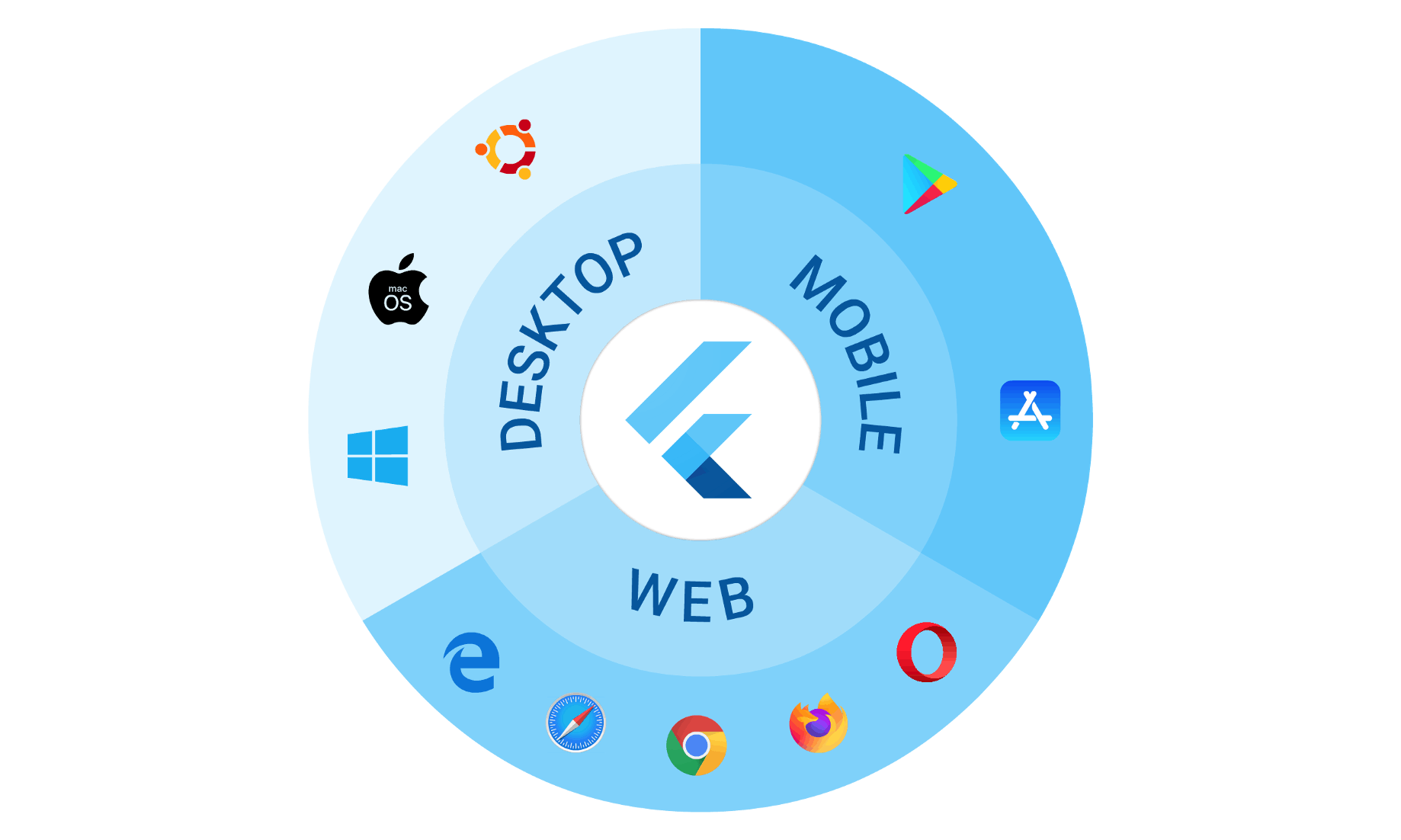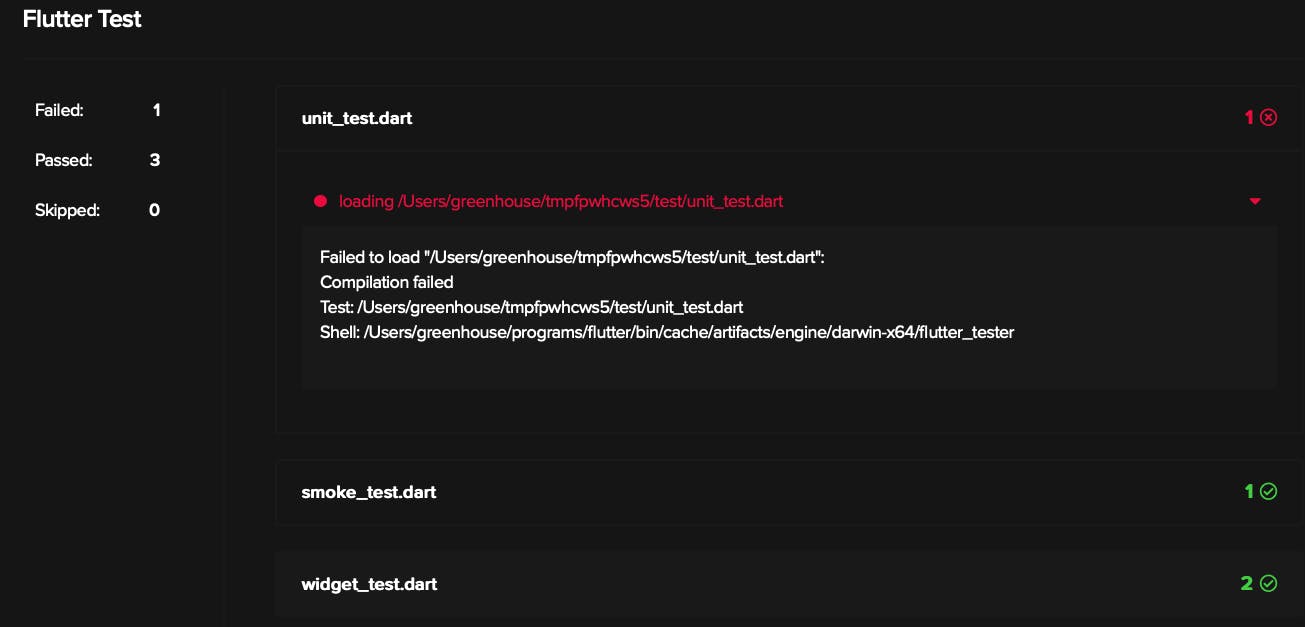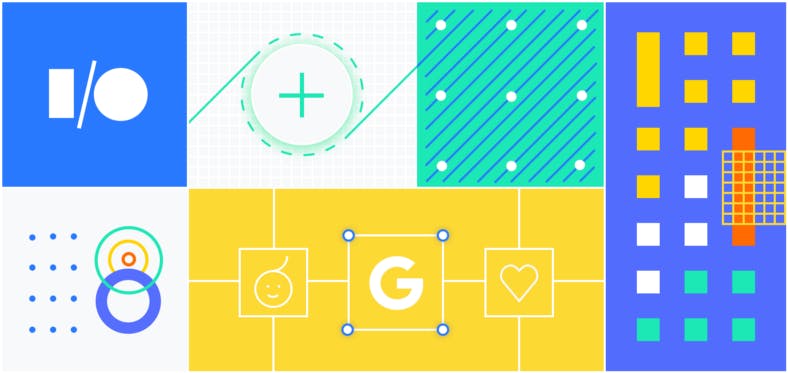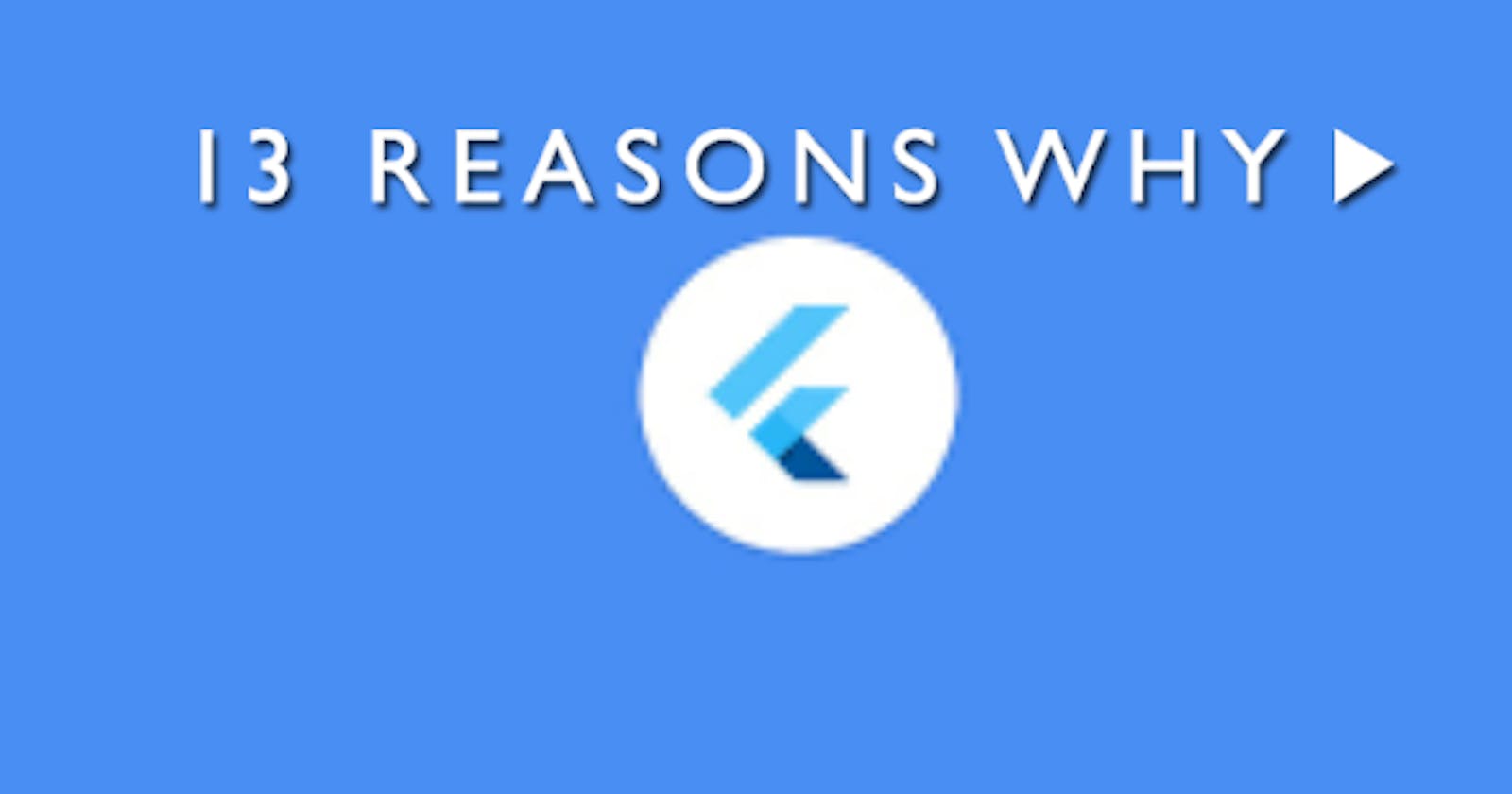13 Reasons Why you should use Flutter
13 reasons why you should Come to the Dart Side & choose Flutter for the development of your next app or learn Flutter to develop the app.
Wondering why should you bother trying Flutter on your next project and what your business gains with it? Regardless of whether you’re a CTO, a TechLead or occupy any other position that requires making effective tech decisions in your company, you’ll find this piece useful.

Particularly, I’ll help you get a clue of what Flutter is and why it’s the most effective cross-platform framework out there. You’ll learn about Flutter’s benefits compared to other cross-platform solutions available and the role of these advantages in both development and business processes.
Altogether, you’ll get a view of why Flutter can be a good solution to some frequently occurring issues in your business.
Table of Contents
- What is Flutter?
- 13 Reasons Why
- Flutter overcomes the traditional limitations of cross-platform approaches
- Developers increase productivity ten-fold
- Frontend & Backend with a single code
- Animations using Flare
- There is an extensive catalogue of open source packages
- Integration with Firebase
- Support for a variety of IDEs
- UI Compliance — Everything is a Widget
- Different themes for Android/iOS
- It’s a powerful design experience out of the box
- Flutter on desktop and the web
- Requires Less Testing
- Conclusion
What Is Flutter?
Throughout my professional career in software development, I’ve witnessed the recurring difficulty of choosing between what instrument to use for mobile cross-platform development in a number of projects. All these projects were different, but almost all of them had one thing in common: the resulting app was required to work on as many devices as possible. And it was a real challenge.
Flutter is a mobile development framework that has become quite popular among coders across the world. It has all the elements from cross-platform and native development models to build robust applications in minimal time.
In this article, I highlight my thoughts on what advantages of Flutter are going to make it dominate the cross-platform application development in the upcoming years.
13 Reasons Why
Let’s see 13 reasons to choose Flutter as your development environment or even to start off your career in Flutter.
1. Flutter overcomes the traditional limitations of cross-platform approaches.
Creating a truly cross-platform approach has long been the bane of tech consultants tired of having to make multiple versions of an identical product. However, in reality, the user experience typically lags behind that of native applications, because you often end up building the UI experience in JavaScript that has to be Just In Time compiled.

With Flutter, you not only have the advantage of a “write once” approach, you create a high performance, “native” experience because a Flutter App is an Ahead Of Time compiled, machine binary executable. It overcomes several of the normal challenges that go with cross-platform approaches.
2. Developers increase productivity ten-fold.
This increase in productivity comes from Flutter’s “hot reload” (A.K.A “Stateful Hot Reload” and “Hot Restart”. Together, these allow developers to see changes they make to the state of an app in less than one second; and changes to the app structure in less than ten.
There’s no need to run another Gradle build— you see your modifications as soon as you save. For developers, this is often very easy to master — there’s little or no learning curve concerned in using the “hot reload” because by default it happens every time you save. However, the advantages are vital. Development time is often reduced by 30–40% because the Gradle rebuild times that slow Android developers down typically take longer with every modification being applied.
3. Frontend & Backend with a single code.
Unlike in Android coding, where there are separate files for fronted (Views) which are referenced by backend (Java), flutter uses a single language (Dart) which does both the job and uses a reactive framework. Dart has been built on a lot of the most popular features of other languages without losing the familiarity of Java or similar languages. Dart was built with the developer’s ease in mind and thus makes a lot of common tasks much easier.
4. Animations are even easier using Flare.
This amazing online tool can be used to create extraordinary UI or animations with ease. It bridges the gap between the UI designer and the developer, reducing the time required to apply UI or animation related changes. I have used Flare and I was amazed at the simplicity of creating animations; with a very shallow learning curve!

5. There is an extensive catalogue of open source packages.
The large set of open source packages available helps you create apps faster, with ease, and there are a lot of packages currently available which make many complicated tasks much easier. Although still relatively young, the package library is growing by leaps and bounds every day thanks to an ever-growing population of developers actively contributing to Flutter.
6. Straightforward integration with Firebase.
Firebase provides out of the box support for a collection of services such as cloud storage, cloud functions, real-time databases, hosting, authentication and a whole lot more. Your infrastructure is instantly serverless, redundant and scalable. This means you don’t have to spend a lot of time and resources building the backend. It’s also straightforward to combine it with a tool for automating your development and release process like Fastlane; facilitating Continuous Delivery. Therefore you don’t have to have dedicated DevOps support in your team.
7. Flutter has support for a variety of IDEs.
When coding with Flutter you can choose from a number of Integrated Development Environments. At first, I started off with Android Studio, but then I saw Flutter Live where they were using VS Code. That got me wondering, and I found that a lot of Flutter developers use Visual Code. When I tried it I could see why so many prefer it. VS Code is lightweight and much faster and has most of the features available in Android Studio and IntelliJ. Personally, I’ve made the move to VS Code but you can use a number of other IDEs as well, You don’t need to switch in order to start working in Flutter.
8. UI Compliance — Everything is a Widget.
In flutter, everything is a widget, the App bar, Drawer, Snackbar, Scaffold, etc. It’s easy to wrap one Widget inside another to give this to do things like centre something, by wrapping it in a Center Widget. This is all part of helping make sure your users have an experience no matter what platform they’re running on. You should read the following documentation from flutter as well: Everything’s a widget.

9.Different themes for Android/iOS.
Assigning the proper theme for a user’s platform is as easy as using a ternary if to check which platform the user is running on; allowing your UI to make run-time decisions about which UI components to use. Here’s a sample code to do the same, it checks the current platform and if it's iOS, it returns a theme of purple primary colour.
return new MaterialApp(
// default theme here
theme: new ThemeData(),
builder: (context, child) {
final defaultTheme = Theme.of(context);
if (defaultTheme.platform == TargetPlatform.iOS) {
return new Theme(
data: defaultTheme.copyWith(
primaryColor: Colors.purple
),
child: child,
);
}
return child;
}
);
10. Continuous integration using Code Magic.
Code magic is an open-source tool featured in Flutter Live on December 4th, 2018. Code magic is easy to learn and completely free! It’s a highly sophisticated CI tool, optimized specifically for Flutter. Code magic makes build processes seamless.

4. It’s a powerful design experience out of the box.
Due to the Flutter team’s careful implementation of the Material design specification, it’s easy to create powerful UI experiences right out of the box. It helps produce the smooth, crisp experience you typically only see with native applications because Flutter’s release build is a native application. Flutter has widgets that implement the Human Interface Design specifications for iOS, allowing you to get that native “feel” on iPhone and iPad as well.

12. Flutter on desktop and the web.
Everyone was stunned by the revelation that the Flutter team now has prototype Flutter apps working in a web browser. The previously Top Secret project, “Hummingbird” was unveiled to the world during Flutter Live. Soon, you’ll be able to use the same code to create apps for mobile, desktop and the web with ease.
13. Requires Less Testing.
Normally testing would require checking on compatibility on different platforms. With Flutter, apps use a single code base with no change to run across different platforms. All one needs to do is to test a Flutter application just once and save a lot of time and money for the developer.
Conclusion
There are lots of reasons Flutter must be your first choice for developing a new mobile application. It is quickly becoming very popular because of its many benefits. You can read all about it on flutter.dev. It will guide you in making the right decision and choosing this technology for building a fresh application.
You can now extend your support by buying me a Coffee.😊👇

